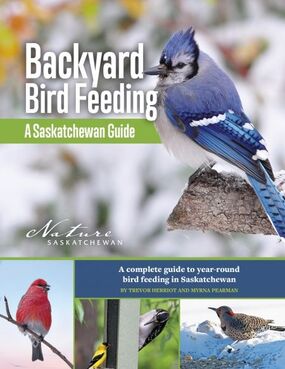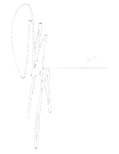 Backyard Bird Feeding: A Saskatchewan Guide: A Complete Guide to Year-round Bird Feeding in Saskatchewan Written by Trevor Herriot and Myrna Pearman Published by Nature Saskatchewan Review by Shelley A. Leedahl $19.95 ISBN 9-780921-104353 It’s apropos that a Blue Jay graces the cover of Backyard Bird Feeding: A Saskatchewan Guide: A Complete Guide to Year-round Bird Feeding in Saskatchewan. The Blue Jay is my home province’s provincial bird, and Blue Jay is also the name of Nature Saskatchewan’s quarterly publication. And did you know that these handsome birds also have such incredible memories, they hide seeds and nuts in trees or in the ground and return later to enjoy them? I can’t even remember where I left my glasses a minute ago. The seven chapters in this photograph-full softcover provide a compendium of information for those who, like bird-experts Trevor Herriot and Myrna Pearman, admire—and are inspired by—“the remarkable lives of wild birds,” and understand how it’s beneficial to birds and humans when we study, support and discuss them. “To feed birds in a mid-continental temperate place like Saskatchewan is to reach out a hand toward the untamed dramas outside our windows,” the co-authors write. This easy-to-read, school notebook-sized guide begins with a history of bird feeding, and asserts that while it’s an age-old activity, its popularity rocketed with the development of conservation groups, and Roger Tory Peterson’s 1934 field guide secured wide interest in our “wild-winged neighbours”. In post-WWII suburbia, both gardening and bird feeding greatly increased and nature centres sprung up. Bird feeding was forever changed in the 60s with the importation of nyger seed, and scientific research, the bird-feeding benefits of black oil seeds, and the use of seed feeders fed the passion for bird feeding in the 70s. Today, “8.4 million Canadian households (61.5 percent) buy wild bird feed”. And why not? Aside from being fun, educational, and aiding science (ie: bird counts), evidence indicates that watching birds at feeders even lowers blood pressure. While bird-feeding naysayers point to dependency, disease spreading, cat and predatory bird attacks, window strikes, and potential migration delays—among other issues—the writers assert that bird-feeding benefits highly outweigh potential harms, and healthy birds will always also find their own natural food sources. This info-packed guidebook teaches the diverse variety of what (seeds, fruit, corn, pet food, vermicelli … and expect recipes for suet!), how (see the many feeder designs), and where to feed and water our feathered friends. I learned so much, ie: “photoperiodism” means hours of daylight, birds have a third eyelid called a “nictitating membrane,” and it’s a myth that if you touch a baby bird its parents will abandon it. Did you know Eurasian Collared-Doves are in North America thanks to a mid-1970s pet shop burglary in the Bahamas? That birds have dialects? What a “keystone” species is, and that sapsuckers are among them? Birds have learned to live through Saskatchewan’s harsh winters via “a variety of physical, physiological, and behavioural strategies,” including shivering, going into “nightly hypothermia by dropping their body temperature,” and huddling. Backyard Bird Feeding: A Saskatchewan Guide is a brilliant resource for beginner and veteran bird-feeding aficionados. As such, it should fly off the shelves. THIS BOOK IS AVAILABLE AT YOUR LOCAL BOOKSTORE OR FROM WWW.SKBOOKS.COM https://reviews.skbooks.com/backyard-bird-feeding/?fbclid=IwAR0LgGRQpv5L3cmpV5sm562xBi89GKQIYSckcOUNWF_-p2LPfliGPOyfLx8 |
AuthorMyrna Pearman Archives
August 2022
|
All photos and published works on this website are copyright Myrna Pearman unless otherwise noted.
Re-posting these images or publishing is not permitted without Myrna's written consent.
Copyright Myrna Pearman Publishing 2024- Site design and maintenance by Carolyn Sandstrom
Re-posting these images or publishing is not permitted without Myrna's written consent.
Copyright Myrna Pearman Publishing 2024- Site design and maintenance by Carolyn Sandstrom

 RSS Feed
RSS Feed



17/6/2021
0 Comments